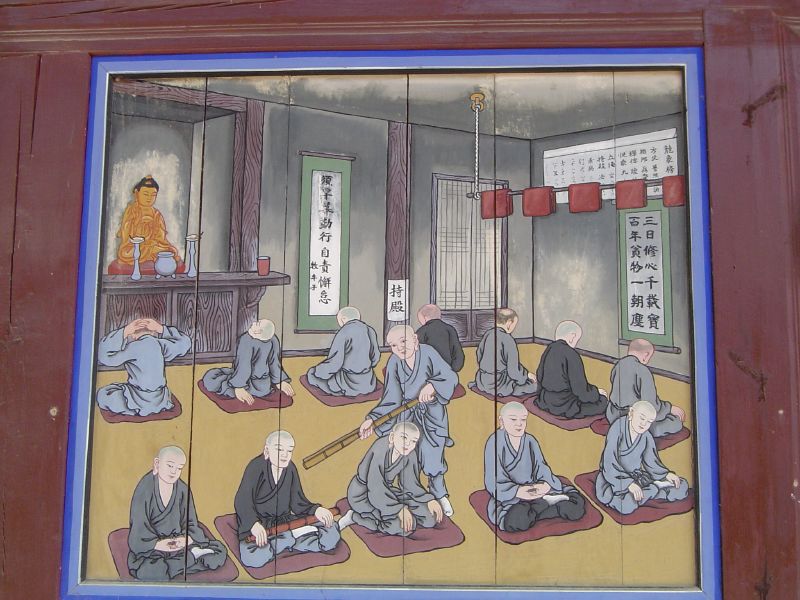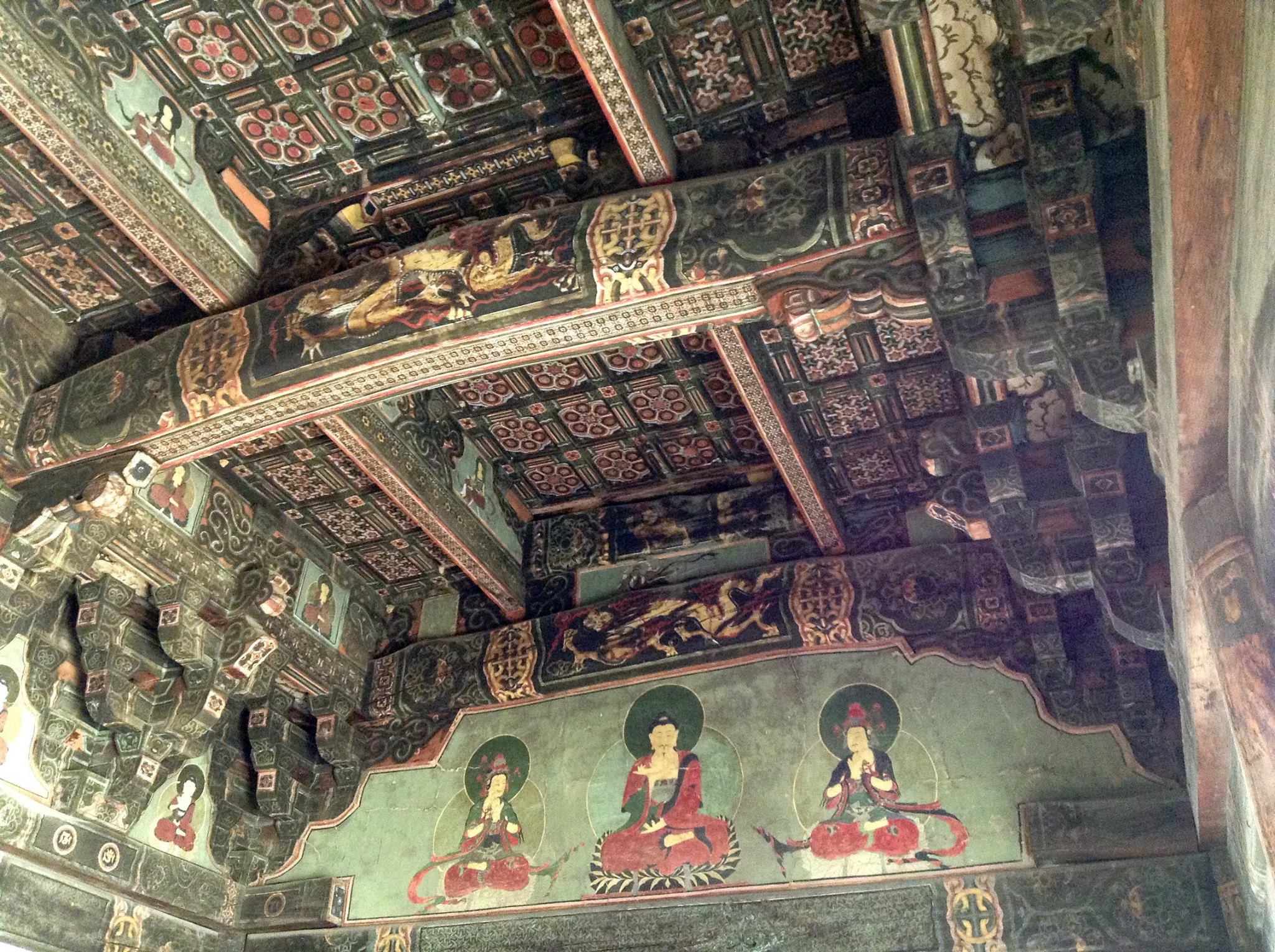|
Songgwangsa
Songgwangsa () translation: Spreading Pine Temple; alternates: Songgwang-sa, or Songgwang Sa, or Songkwangsa; also known as: Piney Expanse Monastery; originally: Gilsangsa), one of the three jewels of Seon Buddhism, is located in South Jeolla Province on Mount Jogye on the Korean Peninsula. Situated approximately away from the sea, it is within the Jogyesan Provincial Park. While founded in 867, it fell into disuse but was re-established in 1190 by Seon master Jinul. Jinul's meditation teachings evolved from this monastery and contributed significantly to the Seon practice that prevails to this day in Korea. Songgwangsa is considered the "jewel" (''Samgharatna'') of the Korean monastic community. Though smaller in size, it is considered as the greatest among the trio of Three Jewels Temples representing “the Buddha, the dharma, and the sangha". The other two of the trio, Tongdosa and Haeinsa, are located in South Gyeongsang Province. This monastery, though under the jurisdic ... [...More Info...] [...Related Items...] OR: [Wikipedia] [Google] [Baidu] |
Jogyesan
Jogyesan, or Mount Jogye, is a mountain of South Jeolla Province in southwestern South Korea. It has an elevation of . It is the main attraction of Mount Jogye Provincial Park (). It takes its name from the Jogye Order, which founded a key monastery, Songgwangsa, on this mountain. The order, in turn, is named after the southern Chinese hamlet of Cáoxī ("Cáo Creek", pronounced ''Jogye'' in Korean), where the historically influential Nanhua Temple stands. Beside the Songgwangsa, Jogyesan is also home to Seonamsa, an important monastery of the Taego Order, a splinter group of the Jogye. See also *List of mountains of Korea The following is a list of mountain A mountain is an elevated portion of the Earth's crust, generally with steep sides that show significant exposed bedrock. Although definitions vary, a mountain may differ from a plateau in having a limit ... References Mountains of South Korea Mountains of South Jeolla Province {{SouthKorea-geo-stub ... [...More Info...] [...Related Items...] OR: [Wikipedia] [Google] [Baidu] |
South Jeolla Province
South Jeolla Province (; ''Jeollanam-do''; ), also known as Jeonnam, is a province of South Korea. South Jeolla has a population of 1,902,324 (2014) and has a geographic area of located in the Honam region at the southwestern tip of the Korean Peninsula. South Jeolla borders the provinces of North Jeolla to the north, South Gyeongsang to the northeast, and Jeju to the southwest in the Korea Strait. Muan County is the capital and Yeosu is the largest city of South Jeolla, with other major cities including Suncheon, Mokpo, and Gwangyang. Gwangju was the largest city of South Jeolla until becoming a Metropolitan City in 1986, and was the historic capital until the provincial government was relocated to the Muan County town of Namak in 2005. South Jeolla was established in 1896 from the province of Jeolla, one of the Eight Provinces of Korea, consisting of the southern half of its mainland territory and most outlying islands. Geography The province is part of the Honam region, a ... [...More Info...] [...Related Items...] OR: [Wikipedia] [Google] [Baidu] |
Jinul
Jinul Puril Bojo Daesa (, "Bojo Jinul"; 1158–1210), often called Jinul or Chinul for short, was a Korean monk of the Goryeo period, who is considered to be the most influential figure in the formation of Korean Seon (Zen) Buddhism. He is credited as the founder of the Jogye Order, by working to unify the disparate sects in Korean Buddhism into a cohesive organization. Biography Bojo Jinul's birthname was Jeong and by age 15 he left his family to ordain under Seon Master Jonghwi of the Sagulsan School, one of the nine mountain schools of Seon, receiving the ordination name "Jinul". This occurred in 1173. By 1182, Jinul passed the royal examination for monks and qualified for a higher administrative position, but turned it down to join the Seon sangha at Bojesa in Pyongyang. The community being uninterested in his efforts to reform the retreat community, he moved to Cheongwonsa at Changpyeong, then Bomunsa on Hagasan. During this period of travel and study, Jinul was said t ... [...More Info...] [...Related Items...] OR: [Wikipedia] [Google] [Baidu] |
Three Jewels Temples
The Three Jewels Temples (삼보사찰, Sambosachal) are the three principal Buddhist temples in Korea, each representing one of the Three Jewels of Buddhism, and all located in South Korea. Tongdosa in South Gyeongsang Province represents the Buddha; Haeinsa, also in South Gyeongsang Province, represents the dharma or Buddhist teachings; and Songgwangsa in South Jeolla Province represents the sangha or Buddhist community. In most Korean Buddhist temples, the highest, most important, and often largest building is the Mahavira Hall--the central hall containing statues of the historical Buddha and other important figures. In the Three Jewel Temples, however, the most important buildings are ones that emphasize each temple's particular jewel. Thus, the main hall in Tongdosa opens out onto a stupa which the faithful claim contains relics of the Buddha; Haeinsa has two large buildings holding the ''Tripitaka Koreana''; and Songgwangsa has several prominent buildings dedicated to its ... [...More Info...] [...Related Items...] OR: [Wikipedia] [Google] [Baidu] |
Korean Seon
Seon or Sŏn Buddhism (Korean: 선, 禪; IPA: ʌn is the Korean name for Chan Buddhism, a branch of Mahāyāna Buddhism commonly known in English as Zen Buddhism. Seon is the Sino-Korean pronunciation of Chan () an abbreviation of 禪那 (''chánnà''), which is a Chinese transliteration of the Sanskrit word of ''dhyāna'' ("meditation"). Seon Buddhism, represented chiefly by the Jogye and Taego orders, is the most common type of Buddhism found in Korea. A main characteristic of Seon Buddhism is the use of the method of meditation, Ganhwa Seon ( ko, 간화선/看話禪). A Korean monk, Jinul (Korean: 지눌/知訥) accepted partially a meditative method of Chan Buddhism in 1205. In Chan Buddhism, hwadu ( ko, 화두/話頭) is a delivery of realising a natural state of the Awakening. Jinul addressed a doctrine of Sagyo Yiepseon ( ko, 사교입선/捨敎入禪) that monks should live an inborn life after learning and forgetting all creeds and theories. Within the doctrine of ... [...More Info...] [...Related Items...] OR: [Wikipedia] [Google] [Baidu] |
Suncheon
Suncheon () (''Suncheon-si'') is a city in South Jeolla Province, South Korea. It is a scenic agricultural and industrial city of around 250,000 people near Suncheon Bay. It is located in the southeastern corner of Jeollanam-do, just over an hour south-east of Gwangju. Forty minutes south of Suncheon is the port city of Yeosu, and twenty minutes to the east of Suncheon is Gwangyang. It is currently experiencing strong development due to being included as part of the ''Gwangyang Bay Free Economic Zone'', one of three newly created Free Economic Zones (FEZs) in South Korea due to open within the next decade. As of October 14, 2007 plans are being set up and a referendum is being planned for a merging of the cities of Yeosu, Suncheon and Gwangyang into a new metropolitan city, taking advantage of the Gwangyang Bay Free Economic Zone, Yeosu's Expo 2012 bid and port facilities, Suncheon's educational institutes and Gwangyang's POSCO plant. History *Era of Samhan: Territory of Mahan * ... [...More Info...] [...Related Items...] OR: [Wikipedia] [Google] [Baidu] |
Jogye Order
The Jogye Order, officially the Jogye Order of Korean Buddhism (대한불교조계종, 大韓佛敎 曹溪宗), is the representative order of traditional Korean Buddhism with roots that date back 1200 years to the Later Silla National Master Doui, who brought Seon (known as Zen in the West) and the practice taught by the Sixth Patriarch, Huineng, from China around 820 CE. The name of the Order, ''Jogye'', was adopted from the name of the village where Patriarch Huineng's home temple, Nanhua Temple, is located, (). The Jogye as a distinct school arose in the late 11th century when Jinul sought to combine the direct practices of Korean Seon with the theological underpinnings of sutra-based Buddhist schools as well as with Pure Land Buddhism. In 1994, the Jogye order managed 1725 temples, 10,056 clerics and had 9,125,991 adherents. The international Kwan Um School of Zen is a Jogye school founded by Seon Master Seungsahn, 78th Patriarch, who received Dharma transmission from S ... [...More Info...] [...Related Items...] OR: [Wikipedia] [Google] [Baidu] |
Tongdosa
Tongdosa (, "Salvation of the World through Mastery of Truth")Le Bas, Tom :"South Korea" pg 244, Insight Guides, 8th edition 2007 is a head temple of the Jogye Order of Korean Buddhism and in the southern part of Mt. Chiseosan near Yangsan, South Gyeongsang Province, South Korea. Tongdosa is one of the Three Jewels Temples and represents Gautama Buddha. (Haeinsa, also in South Gyeongsang Province, represents the dharma or Buddhist teachings; and Songgwangsa in South Jeolla Province represents the sangha or Buddhist community.) Tongdosa is famous because there are no statues outside of the Buddha at the temple because the "real shrines of the Buddha" (relics) are preserved at Tongdosa. Courtyards at the temple are arrayed around several pagodas that house the Buddha's relics. Origins Tongdosa was established by the monk Jajang-yulsa after returning from Tang China in 646 AD, during the reign of Queen Seondeok of Silla. It thrived throughout the Later Silla and Goryeo periods ( ... [...More Info...] [...Related Items...] OR: [Wikipedia] [Google] [Baidu] |
Korean War
, date = {{Ubl, 25 June 1950 – 27 July 1953 (''de facto'')({{Age in years, months, weeks and days, month1=6, day1=25, year1=1950, month2=7, day2=27, year2=1953), 25 June 1950 – present (''de jure'')({{Age in years, months, weeks and days, month1=6, day1=25, year1=1950) , place = Korean Peninsula, Yellow Sea, Sea of Japan, Korea Strait, China–North Korea border , territory = Korean Demilitarized Zone established * North Korea gains the city of Kaesong, but loses a net total of {{Convert, 1506, sqmi, km2, abbr=on, order=flip, including the city of Sokcho, to South Korea. , result = Inconclusive , combatant1 = {{Flag, First Republic of Korea, name=South Korea, 1949, size=23px , combatant1a = {{Plainlist , * {{Flagicon, United Nations, size=23px United Nations Command, United Nations{{Refn , name = nbUNforces , group = lower-alpha , On 9 July 1951 troop constituents were: US: 70.4%, ROK: 23.3% other UNC: 6.3%{{Cite ... [...More Info...] [...Related Items...] OR: [Wikipedia] [Google] [Baidu] |


.jpg)

